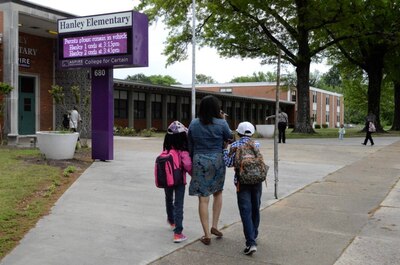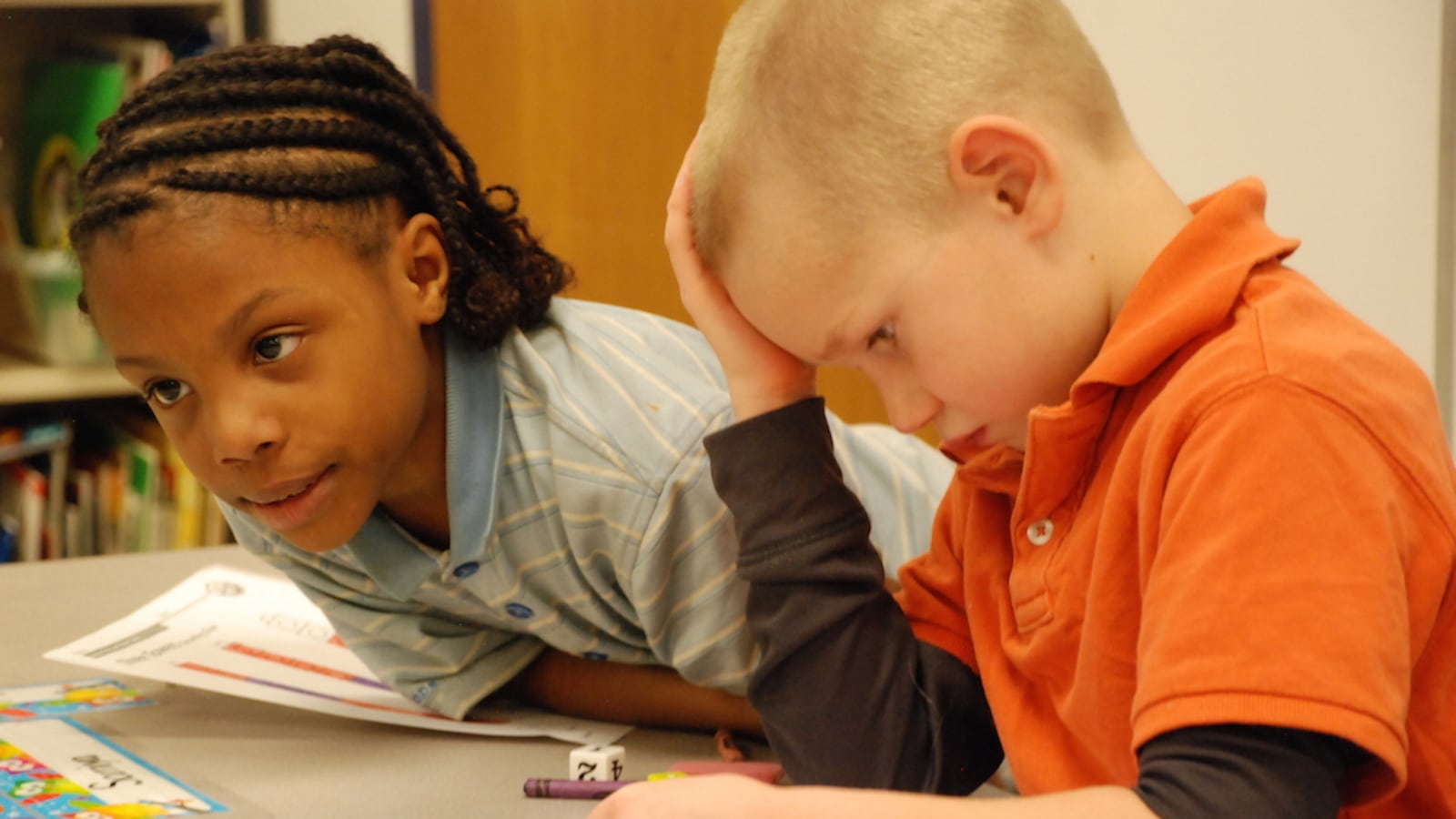New tensions across the nation over race and equity provided a platform Thursday for educators in Memphis to share advice about integrating those conversations into the classroom.
At a back-to-school training for charter teachers with Aspire Public Schools, four teachers talked about the challenges and opportunities during a gathering at Aspire’s Hanley elementary school campus. The campus is in Orange Mound, a historic black community that became one of the South’s first neighborhoods where African-Americans could own homes and businesses.
In Memphis, where about 70 percent of residents identify as people of color and 27 percent live in poverty, conversations about race and equity are essential to educating students, said Aspire Superintendent Allison Leslie, who oversees four Memphis schools.
“I think it’s critical because we’re serving underserved students,” she said. “There’s a lot of implicit bias in all of us, and it’s important for us to recognize that and constantly question our practices, decisions that we make, to make sure that we’re not perpetuating systems of oppression.”
Here are highlights from the panel discussion, held within weeks after a large Memphis protest over the recent shootings of black suspects by white police officers in other cities.
Morgan Jueschke, 1st grade, Coleman Elementary School
“I reflected on how you teach 6- and 7-year-olds what’s happening without ruining that innocence or ruining things for them or creating something negative. It begins with a culturally conscious classroom. It begins with reflecting on my privileges and my biases and how they impact interactions with students either intentionally or unintentionally to reflect on that. And giving students a place where they feel safe and where they feel heard, and if they come to school with questions, seeing that they feel comfortable asking or talking about and listening to them. … I obviously want an environment where they know that they matter, that they’re beautiful. There’s narratives that are written for them that they have the power to change for themselves.”
Kate Waldron, 2nd Grade, Hanley Elementary School #2
“I think one of my fears is that being white, you know they’re hearing a lot of things about white people, and their parents may have told them things. … I know that some of my kids, if they don’t know me, they may have some kind of reservations just because of my color. I’m not going to pretend that that’s not something that’s on my mind, but my goal is to create a safe environment and an environment where my kids feel like they can talk about anything.
I know it’s going to take time. … We have to step out of our comfort zone to let our kids step out of theirs, and I think that’s so true. Sometimes talking about racism and color is uncomfortable, but we have to make sure that the kids feel safe when they come to school to talk about those things.”
Ayo Akinmoladun, 4th grade, Hanley Elementary School #1
“There were a couple of things that I did last year in my classroom. There was this one lesson where I took a school from (the affluent Memphis suburb of) Germantown and I compared it to (Hanley), and we just kind of broke it down on this chart, and I said, ‘What, in terms of household, how do you think households are constructed?’ My kids were saying that most families in Orange Mound have one parent and households in Germantown have two.

I said, ‘What about income? What do you guys think? Do Orange Mound parents make more or do families in Germantown make more?’ Germantown. And so we just continued to break it down, break it down, break it down. And then I asked them, ‘What does this chart tell you?’ And my students came to the conclusion that students in Germantown were more likely to go to college than students in Orange Mound. So we had a discussion about that.
We brought in a student from Melrose High School who got a 36 on the ACT and was going to Stanford. You know, getting these kids to see successful people in their community, going places. It’s as simple as bringing in police officers and having kids ask questions. The uncomfortable needs to become comfortable. And once we get to that spot, I believe they’re going to share with you what scares them the most.”
Tamera Malone, 6th grade teacher, Hanley Middle School
“So this summer with everything that happened, yes I marched, yes I went to rallies, yes I went to community meetings, yes I stood up and I fought for people who are disadvantaged on a daily basis. I think as educators we have to educate ourselves, we have to be informed, we have to go out and we have to fight for the kids that we serve, because if not, they’re going to continue to be disadvantaged and oppressed every single day. And I don’t just mean people of color, I mean everybody. We all have a social responsibility to stand up against human injustices. Because if we don’t, we’re not going to change the outcome for kids.”

